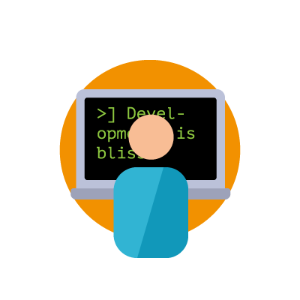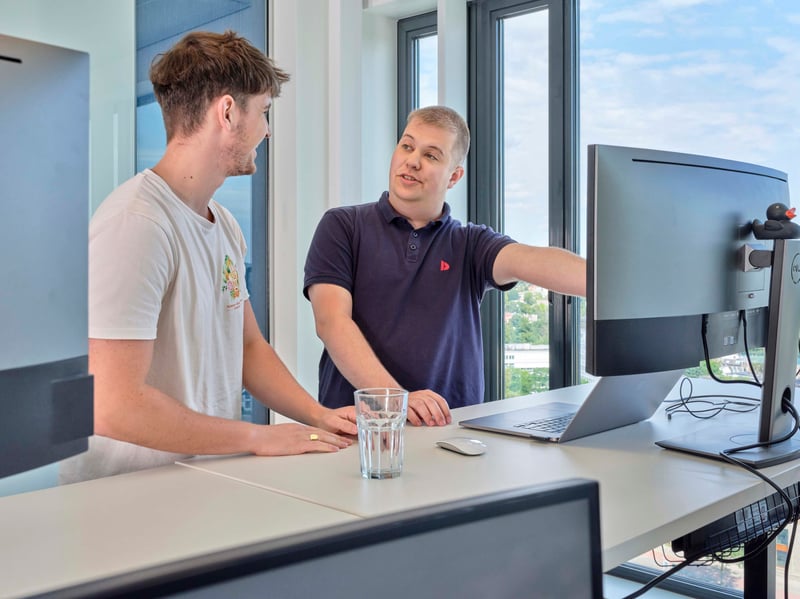Day 3 at Devoxx 2011
Door Avisi / nov 2011 / 1 Min

Door Avisi / / 2 min

This is a “live” blog from day 1 at Devoxx 2011, we will be updating this blog post during the day. You can read all three blogs by following the links below
The day started with an android focused keynote by Google. It was definitely a better presentation than the keynote of day one. Despite that it was about android, Tim Bray showed us where the mobile market is going. Touching topics such as monetizing your app, new android features, comparison with the competition (Apple and Microsoft).
Most revenue made by selling apps is going to the top 100 players, so he suggested you should think about another way of making money. Like in-app sales and subscriptions.
You do not earn money for providing information but for offering a service.
There are currently more than 300.000 applications in the android market. This means your app should stand out, if you want people to buy it. Tim's opinion was that we shouldn't make yet another clone of an existing app, but really offer something new with the latest features in Ice Cream Sandwich and of course it should have a great design, created by a designer and not a programmer!
We don't want to let a designer program our apps, do we?
The talk started out great with a "battle" between a HTML5 and JavaFX developer. But soon lost the crowd with a useless discussion about the number of lines needed to implement a feature in different languages. They did show some cool features in JavaFX, but they didn't show how to get there.
This talk also started good, but got quickly side-tracked with the three presentators talking about the details of Google AppEngine and 30 minutes about a framework on top of Google AppEngine. This would be fine if this was stated in the presentation summary, so this was not what we expected.
The guys from ACA_IT did a thorough research on the performance of different web frameworks. They took GWT, Spring MVC, Vaadin, JSF and Wicket. In their talked they explained exactly which steps they took to prove accuracy of their tests. They created their own software to display the 16 gigabytes of results that were collected during 700 hours of testing.
With OpenShift, JBoss is moving to the cloud. Pete gave a complete demo on how to deploy a project from scratch to OpenShift Express and Flex. He also showed how to upscale your platform with OpenShift Flex. The main difference between Express and Flex is that Express is single node and instantly deploy while Flex is a managed EC node. A great feature is that it is also possible to deploy from Jenkins.
The demo-gods were not in Pete's favor, but we are convinced that OpenShift is a good product, which we are definitely going to try out when we get back home!
JBoss AS7
OpenShift
Unfortunately we were a bit late at the talk of Addy Osmani about jQuery essentials, which meant we had to sit on the stairs. Addy gave a 170 slide intro into jQuery. With simple to understand examples and great explanations he went through the slides with the speed of light.
Most information in the talk we already knew because of our experience, but he showed some features even we didn't know about (guess we should read the documentation again). This proves that attending a presentation about a subject you already know a lot of, can still pay off.
Jerome gave a good explanation about what [I|P|S]aaS meant for Java EE. To bad we got caught up in a support call, so we couldn't attend the full session. Seems like something we should check on Parleys.com
This session contained two presentations related to home automation. The first presentation was about jHome. This new Java project won the "Oracle Innovation Award 2011", which made it a perfect candidate for a presentation at Devoxx. Vinicius Senger gave this presentation and got everybody in the room excited with some awesome demo's and general information about jHome. We might even use this library with our own wallboard backlighting.
The second presentation was about OpenRemote. This presentation was a lot less exciting than the jHome one. Since we also had to stand at the presentation (again to late for a seat), we decided to leave this session for what it was.

| Event visit
Door Avisi / apr 2024
Dan denken we dat dit ook wat voor jou is.